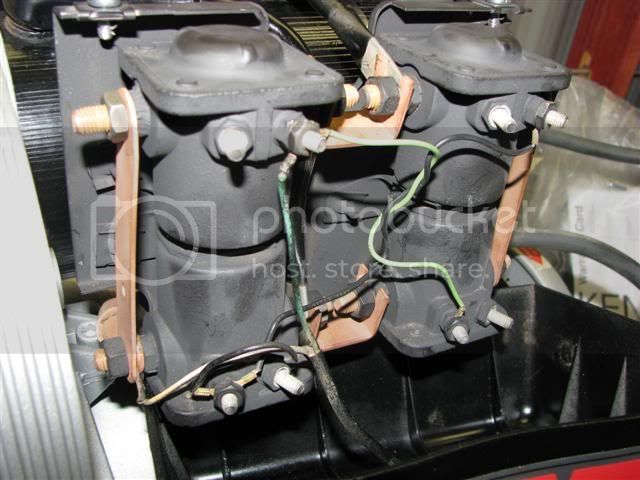I have hit a dilema, the casing has just come back from powder coating and looks great, the only snag is the needle bearing inside the lower case has seezed with sand from shot blasting, I am afraid I forgot to take it out and didn't think about the effects on it.
As long as the needle bearings were not "rusty" (in need of replacement) then there is no reason to remove the bearing. In the future...stuff the bearing with a piece of oil soaked rag in order to keep "most" of the blasting media out.
I am going to replace it and see it as a replaceable part but does anyone know how to remove it. Is the cup on the outside of the casing part of it and do you just tap it through?
The "plug/cap/cup" on the outside of the case is not part of the bearing. It is held in place by means of an "interference fit".
So...yes it can be tapped out...but let me warn you..there is a good chance you will deform it in doing so. I would not expect to be able to reuse it...and I don't see the part represented in any of my parts diagrams.
I guess it goes from the outside in becase there is a lip on the inside edge of the bearing inside the casing.
Yes, a new bearing would normally be installed from the outside. Also, you have correctly noted that the bearing lip protrudes into the casing a small amount in order to act as a "thrust washer" for the shaft (see post #37). This is a common theme on this winch and we see the same practice used for the bronze bushing on the brake shaft as well as the bushing for the drum.
Thanks, any help would be appreciated, I can't believe I was daft enough to leave the needle bearing in

No need to despair Simon, even though I placed a rag inside my bearing when blasting the housing....I still experienced some contamination.

My bearing wasn't fully "seized" as you describe, but very nearly so.
The good news is: As long as your needle bearings are not rusty or otherwise worn beyond usefulness, then we can get the blasting media out (I did).
Logic tells us that if the media was able to get "in" then it must be able to come "out".

I was able to accomplish this using compressed air, but I suspect a high pressure stream of water would work too.
First you have to create a "void" by which the particles can escape. I did this using an ordinary toothpick that I shaved down slightly. You can create a fairly decent "gap" between two of the needle bearings if you force a toothpick between them.
Then.. simply apply compressed air (watch your eyes...as everything will come directly back out of the bearing bore).
Remove the toothpick, rotate the bearings a little and repeat until you get free movement.
Once you get free movement you will no doubt still feel the bearings "grinding" a little. At this point... I used a light oil (Marvel Mystery Oil) and completely soaked the needle bearings. This caused the remaining grit to clump..and the oil helped to carry out the remainder with a blast of air. It's messy though, I have to warn you.
So, you'll have to weigh the trouble/effort of salvaging your present bearing against the cost, parts availability, and labor of doing a replacement.
I spent perhaps 10 minutes cleaning mine up, but... I had a compressor and everything else needed.
Hope this helps, sorry for the length.
Flint.




 .
.